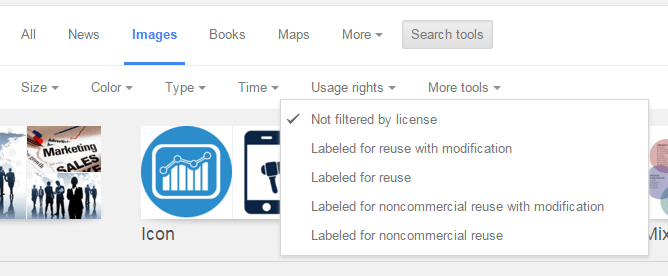You don’t have to have every high-tech system out there to be able to set up a sophisticated marketing strategy AND be able to measure it. (Because if you’re not measuring results, you’re wasting your time and resources.) All you need are consistency, a little knowledge of how digital media work, some creative thinking, and a few low-tech marketing hacks that will boost any company’s marketing strategy.
Thanks to the Internet and the rise of e-commerce, every click consumers make can be tracked, recorded, and measured, giving valuable information to sales and marketing teams everywhere.
![]() Even without fancy reporting programs tied into all your campaigns (although let’s face it – Google Analytics can enhance almost anything you do with a lot of valuable feedback), almost every digital medium has at least basic reporting features you can use to refine your marketing campaigns and overall marketing strategy.
Even without fancy reporting programs tied into all your campaigns (although let’s face it – Google Analytics can enhance almost anything you do with a lot of valuable feedback), almost every digital medium has at least basic reporting features you can use to refine your marketing campaigns and overall marketing strategy.
But don’t forget the human element. Digital tools and reporting are great, but there are lots of great marketing techniques based on basic consumer psychology to take into consideration. These techniques can make it more likely that prospects will use your digital tools and respond to your marketing campaigns in the first place. Taking advantage of how consumers are more likely to behave naturally will yield much better results than if you try to force your audience to jump through uncomfortable hoops.
Armed with powerful consumer information, you can get away from the “spaghetti method” of marketing and pinpoint your marketing campaigns with more accuracy.
Check out some of these creative low-tech marketing hacks, and see which of these could boost your company’s marketing strategy and profile.
Most underutilized marketing tool – the landing page
Too many companies still default to sending readers to their homepage in social media and advertising campaigns. They think sending readers to this basic entry point is the best way to let people see everything they have to offer. Or, sometimes they forget that they can create new pages in their website. Or, they think it’s too much trouble.
But when you send readers to your homepage instead of a carefully crafted and targeted landing page, you’re missing out on two critical things:
- The opportunity to deliver a more targeted message or special deal to different segments of your audience, since not everyone is going to have the same needs and concerns
- A chance to measure the web traffic of specific campaigns; because even without sophisticated analytics programming, if your landing page URL is only available through your marketing campaign, you can always measure page views to gauge response level
For your landing page to be most effective, make sure the call to action and the navigation of where you want your reader to go are crystal clear. You don’t want readers to get frustrated looking for more information and have no way back to your website or product information. (And while the savvy among us may know a few intuitive tricks for navigating away from a landing page, always think of the least tech-savvy in your audience. You don’t want to leave them behind by accident.)
Another nice thing about landing pages is that when you’re thinking about the user experience for that page, you can design and control the navigation to lead readers exactly where you want them, which should make for a better experience for the reader and a more measurable, more effective marketing campaign for you.
And if you haven’t installed some backend analytics in your website yet, take a look at this article from Mashable that compares 50 different analytics tools (note: it’s an older article, but it’s incredibly comprehensive). Many of them are free and can make your job much easier by giving you the answers you want about user behavior. No more guessing!
Drip marketing
Drip marketing is the newest buzz phrase for an old advertising concept – and that concept is that it takes several impressions before a consumer notices your brand. It takes several more before they remember you. And then it takes several more impressions before that consumer will think about taking action and buying your product or service.
Drip marketing is one solution to the age-old problem of how do you stay at the top of consumers’ minds so they think of you first (not your competitors) the moment they need you.
A drip marketing campaign is built upon the simple concept that you contact your target audience with a little information, something interesting they can use, on a regular basis. Maybe you hit your audience once a week. Maybe you contact them only once a month. Drip marketing is about achieving that delicate balance of staying in touch with and engaging consumers without bombarding them with so much communication that you chase them away.
One of the reasons companies like drip marketing (besides that it works) is that it’s incredibly easy to automate. You can write a bunch of emails or social media posts months in advance. Write your campaign in a few days, then set up your content to send or post at regular intervals. You can schedule blogs in advance in WordPress. Use Hootsuite, Sprout Social, and other social media aggregators to schedule social media posts far in advance. Then, set up emails to send at regular intervals in your email delivery system, such as MailChimp and Constant Contact.
You never truly want to “set it and forget it” when it comes to your marketing, because you want to make sure that A. your marketing efforts are working and getting results, and B. current events don’t suddenly make your marketing efforts seem offensive (like if you decide to have a “fire sale” for California residents, and then a huge wildfire happens). However, drip marketing is as close to “set it and forget it” as you can get. For busy startups and under-staffed marketing departments, this can be a godsend.
How to get images quickly when you don’t have any
We are visual people. And when you look at a wall of tweets, Facebook posts, or even text in a blog, pictures are more likely to catch our attention and draw us in.
They just make everything look prettier. And who doesn’t like pretty things?
Simple hacks for getting images when you don’t have images already:
- Grab a smartphone and make something up. Do a search for stock images, and then create your own. That’s how stock images of things like numbered to-do lists and “New Year’s Resolutions” written on a chalkboard come into being. Someone needs that photo but doesn’t want to pay for that photo. They recreate the photo themselves.
- Use an infographic program, such as Piktochart, to whip up a quick image or graphic. One easy technique you can always have on stand-by? Pull out a quote from the blog you’re working on and create your own highlight box.
- Check out the thousands of free images at pixabay.com.
- In Google, go to the Images search. Click on “Search Tools” to make more options appear below the original toolbar. Find the dropdown menu labeled “Usage Rights”. Choose the option that best fits what you need, such as “Labeled for noncommercial reuse with modification”.
Networking and partnerships – you’ve got to give to get
Never forget the power of old-fashioned networking – and how the principles of networking apply even when networking in social media. When you’re networking, your motto should be “give to get”. Whether in person or online, don’t always be in it for yourself. No one likes someone who begs them to do business all the time.
When you walk into a room, join an online interest group, or start following people on LinkedIn, wherever you are, find out what the other people in your group are interested in. What will make their lives easier? What do they need to make their business more successful? Then, give it to them. Introduce them to colleagues you already know who can provide the services they’re looking for. Share an article on Facebook or LinkedIn that relates to problems you’ve been discussing. Be the answer person. You’ll get a good reputation as the go-to person for many of the tough questions in life (and business), and people will remember you when they genuinely need your services.
Then, apply these same questions to your marketing strategy on a broader level. What does your target audience need? Are you the right person to give it to them? Do you know someone whose target audience intersects with yours? Can you partner with them on marketing campaigns to give added value to your audience? How can you actually create value in your audience’s lives?
People won’t always remember what you say – in marketing or in person. But they will remember how you make them feel. And if you can make them feel good through your networking, partnership, or broader marketing efforts, you’re more likely to stay top of mind with your customers and prospects.
Referrals
Referrals are an extension of your networking efforts. They add a human touch. People trust reviews and referrals from people they know over generic marketing or the word of people they don’t know. So, how can you make that work for you in your marketing?
Referral and loyalty programs are great, low-tech ways to grow your customer base. Something as simple as putting up a memo on Facebook and Twitter that says something like, “Have you had a good experience with us? Share this post to tell a friend, and we’ll give you 5% off your next purchase!” Then, you can go into Facebook and track your shares. Send everyone who shared your post a promo code for 5% off their purchase. (Take it one step further and start grouping the people who share your posts the most, so you can send them special incentives via social media and email.)
Also make sure you’re harnessing the power of reviews! Where are people most likely to see you? Do you need to bolster your Yelp reviews? Angie’s List? Facebook? Or maybe you have product reviews within your own site? Find out where your audience is, then make sure you’re collecting reviews from real customers at two major points – where prospects are likely to encounter you for the first time and when they’re likely to make their purchasing decision.
Keep in mind that you’ll never be able to completely control bad reviews in public spaces, such as Facebook. However, if you’re constantly soliciting positive reviews from your best customers (and of course, providing excellent customer service and products), then all the good reviews should more than outweigh the negative ones.
Research your hashtags
This is another low-tech solution to getting more of your tweets noticed. Say you want to post about mobile commerce (mCommerce). Use Google to search for popular hashtags related to mCommerce. Also, try out some of these websites to research the popularity and usage density of certain hashtags that relate to your topic:
HashAtIt.com
Hashtags.org
RiteTag.com
Hashtagify.me
And of course, there’s always good ol’ Twitter for researching the trending hashtags of the day.
In other words, don’t get discouraged if you don’t have the biggest, fanciest marketing department. Or if you have a big department but still seem understaffed. With a few quick workarounds, you can up your marketing strategy game. These techniques will not only make your marketing efforts look more sophisticated – they’ll also help you measure your results, so you can refine your strategy for maximum ROI.
And when you’re ready to take your website and analytics up yet another notch, give us a call. We’re always happy to give you a free consultation to evaluate where you stand currently and to see if there’s anything RTS Labs can do to make your life easier – and your business game stronger.






